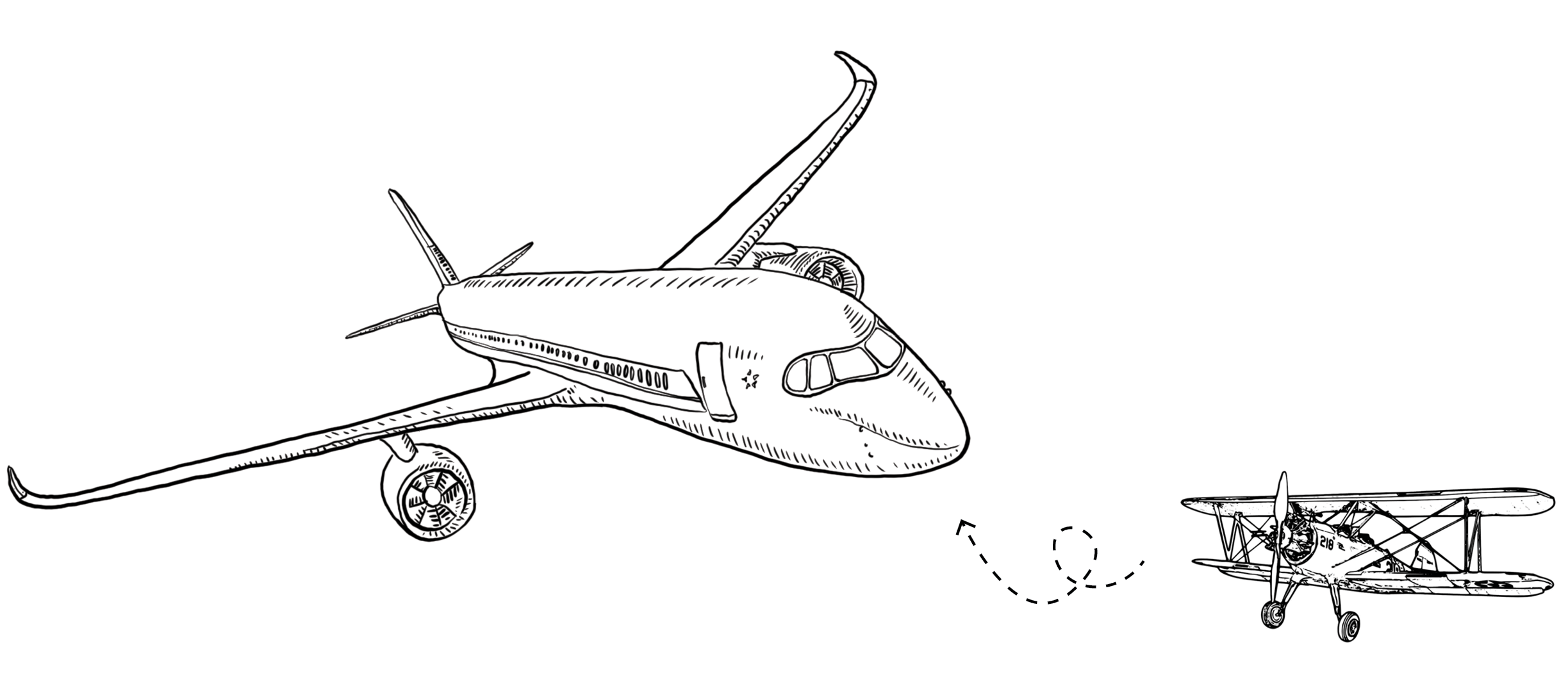Mytho-
logizing

From tales of near-disasters to gripes about endless delays, dramatic weather shifts, and lost bags, airport horror stories often take on a life of their own.
︎︎︎ Related entries:
Illusion of Control
Non-Place
Rituals
︎ Random Entry
Tags: experience, psychology
Illusion of Control
Non-Place
Rituals
︎ Random Entry
Tags: experience, psychology
From tales of near-disasters to gripes about endless delays, dramatic weather shifts, and lost bags, airport horror stories often take on a life of their own. Much more than any other hubs of transportation, airports loom larger than life in the cultural imagination. These stories become familiar accounts of a place that seems to recycle and thrive on its own mythologies.
It may be that mythologizing is a way for today’s passengers to reconcile the realities and banalities of air travel today with both the supposed glamour of air travel in the past and the inherent allure of the idea of flying. Despite the bodily discomforts inherent to the early flights, popular conception about the glamor of past air travel has endured. Additionally, yearning for flight is a familiar, universal human longing, but people have come to recognize that the air travel experience as it exists today cannot help them satisfy the childhood dreams of flying.
“I was as free as a bird... Incredible! It’s beautiful. You’re breaking the bounds of gravity. I have a feeling this is the innate desire of man” [1]. Skating on ice on a cold, clear, and crisp afternoon after a long hiatus, the hockey player Eric Nesterinko remarked those words describing his joy of movement on ice by using words analogous to flying. Flying, then, should naturally be even better, even more freeing, and even more incredible. The reality of flying today’s is that the passengers do not get to experience many sensations of freedom.
Yi-Fu Tuan captures this contradiction between romantic notions of flying with the realities of air travel experience in the following passage:
It may be that mythologizing is a way for today’s passengers to reconcile the realities and banalities of air travel today with both the supposed glamour of air travel in the past and the inherent allure of the idea of flying. Despite the bodily discomforts inherent to the early flights, popular conception about the glamor of past air travel has endured. Additionally, yearning for flight is a familiar, universal human longing, but people have come to recognize that the air travel experience as it exists today cannot help them satisfy the childhood dreams of flying.
“I was as free as a bird... Incredible! It’s beautiful. You’re breaking the bounds of gravity. I have a feeling this is the innate desire of man” [1]. Skating on ice on a cold, clear, and crisp afternoon after a long hiatus, the hockey player Eric Nesterinko remarked those words describing his joy of movement on ice by using words analogous to flying. Flying, then, should naturally be even better, even more freeing, and even more incredible. The reality of flying today’s is that the passengers do not get to experience many sensations of freedom.
Yi-Fu Tuan captures this contradiction between romantic notions of flying with the realities of air travel experience in the following passage:
Small aircrafts of the kind in use during the 1920s are capable of extending man’s freedom, his space, as well as putting the human being into a more intimate relationship with the vastness of nature...
When transportation is a passive experience, however, conquest of space can mean its diminishment.
Think of the jetliner. It crosses the continent in a few hours, yet its passengers’ experience of speed and space is probably less vivid than that of a motorcyclist roaring down a freeway.
Passengers have no control over the machine and cannot feel it as an extension of their organic powers. Passengers are luxury crates--safely belted in their seats--being transported passively from point to point” [2].
Air travel, which seems to promise such freedom, is a fundamentally different experience than expected. To some degree, this is unavoidable in order to be able to transport the mass quantities of people in a safe and efficient manner. As a result, every anecdotal account from friends of friends becomes entrenched in the cultural understanding of air travel, and society becomes transfixed by every accident or crash in the news.
These stories we hear or recount vividly to ourselves have the power to shape our perspective about the entire air travel journey; “changes in perception and attitude can seem to alter an environment more markedly than if it had been physically changed” [2]. In designing airport spaces and the air travel experience, designers and architects must take into account this “feedback loop where stories shape airports, and airport shape stories - the dynamic coshaping that exists in the everyday practices of air travel” [3].
![]()
These stories we hear or recount vividly to ourselves have the power to shape our perspective about the entire air travel journey; “changes in perception and attitude can seem to alter an environment more markedly than if it had been physically changed” [2]. In designing airport spaces and the air travel experience, designers and architects must take into account this “feedback loop where stories shape airports, and airport shape stories - the dynamic coshaping that exists in the everyday practices of air travel” [3].

- Terkel, Studs. 1974. Working. New York: Pantheon, 385-6. quoted in Tuan, Yi-Fu. 1977. Space and Place. Minneapolis: University of Minnesota Press.
-
Tuan, Yi-Fu. 1977. Space and Place. Minneapolis: University of Minnesota Press.
-
Schaberg, Christopher. The Textual Life of Airports: Reading the Culture of Flight. London: Continuum, 2012.